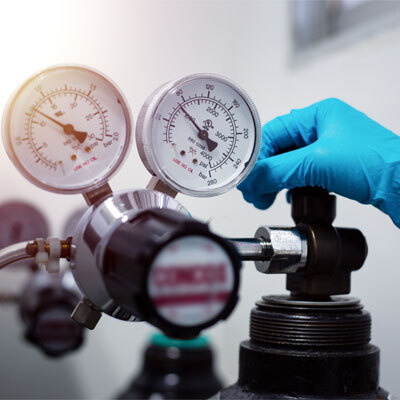The 10 Most Common Issues Found During a Gas Safety Audit
 Conducting a periodic gas safety audit is an important precautionary step for every life sciences facility and lab to undertake. During this audit, your gas provider should inspect all cylinders and tanks, manifolds, regulators, valves, visible piping, and more. This essential review can help ensure that your gas equipment is secured and stored properly, that the gas grades you are using are appropriate for the application, and that you have sufficient backup plans in place for a wide variety of worst-case scenarios.
Conducting a periodic gas safety audit is an important precautionary step for every life sciences facility and lab to undertake. During this audit, your gas provider should inspect all cylinders and tanks, manifolds, regulators, valves, visible piping, and more. This essential review can help ensure that your gas equipment is secured and stored properly, that the gas grades you are using are appropriate for the application, and that you have sufficient backup plans in place for a wide variety of worst-case scenarios.
A gas safety audit may also highlight ways you could be utilizing remote cylinder monitoring, wireless telemetry, and other technology to track and manage your gas levels and deliveries more effectively. Finally, this detailed assessment may uncover potential OSHA violations that need to be addressed to prevent you from incurring permanent citations or costly penalties.
What could a gas safety audit of your facility or lab reveal?
Over the past 25 years, the Middlesex Gases team has conducted comprehensive gas safety audits for hundreds of customers. Based on these experiences and our decades of gas industry knowledge, we have accumulated a long list of issues that may surface during an audit. Today, we want to share 10 concerns that arise frequently:
- Gas cylinders not secured properly (or at all) to a wall or lab bench.
- Gas cylinder caps missing from cylinders that are not being used.
- Gas regulators mounted directly on gas cylinders rather than to a wall via a protocol station.
- Liquid nitrogen dewers being used in a cryogenic freezer that is set at 220 PSI rather than what it should be set at, which is 22 PSI.
- Gas manifolds being built in-house by the customer with parts that are not safe to use for regulating the flow and pressure of gases.
- Gas regulators that were originally designed for one type of gas (e.g., oxygen) being inappropriately modified with adaptors to be used on cylinders for a different type of gas (e.g., argon).
- Industrial tanks being used for ultra-high-purity gases, which usually will lead to impurities in the gas stream and may affect the gas cylinder column, a part that can cost thousands of dollars to replace.
- Industrial regulators being misused with high-purity gas applications—these regulators have neoprene diaphragms that can release hydrocarbons into the gas stream.
- Quick disconnect fittings being used on gas tubing, which often allows a large amount of room air to be sucked into the gas stream.
- Nitrogen gas generators being used without a backup manifold system, which typically means there is nothing to keep a facility or lab up and running if the generator fails.
When we conduct an audit for our customers, we share any findings like this right away. If there is an issue, we know how vital it is to provide a prompt recommendation for fixing the problem and implement a solution as quickly and cost-effectively as possible. A gas safety audit should not take long—our team usually can complete one in around an hour—and the information uncovered can be well worth that investment of time.
If you manage a life sciences facility or lab and have any questions or concerns about its gas safety, quality, or technology, you may want to contact us for an audit. Complimentary gas safety audits are available to all Middlesex Gases customers as is our hands-on safety training seminar. We recommend coupling the audit and the class, so that your employees can first participate in the cylinder gas handling safety program, followed by a guided walk-through of the lab, where learnings from the class can be reinforced and immediately applied.
